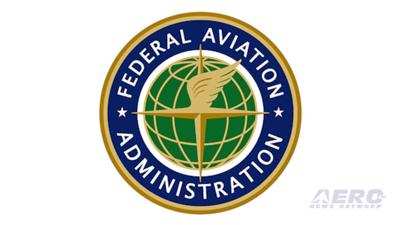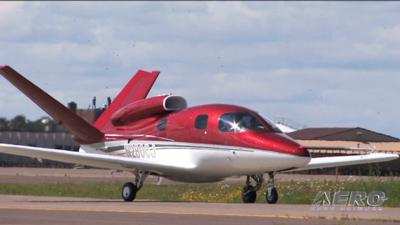Autopilot, Auto-Throttle, and BPRS Anomalies Observed
Compelled by reports of an accident and an incident resulting from uncommanded in-flight activation of the Cirrus Airframe Parachute System (CAPS) autopilot mode, the FAA is adopting a new airworthiness directive (AD) for all Cirrus Design Corporation Model SF50 airplanes.

Subject AD requires booting the SF50’s avionics in configuration mode, inhibition of the CAPS autopilot, fabrication and installation of informational placards, revision of the SF50’s extant Airplane Flight Manual (AFM), revision of the Airworthiness Limitations Section (ALS) of the existing SF50 Approved Maintenance Manual (AMM) or Instructions for Continued Airworthiness (ICA), and—as applicable—revision of extant SF50 approved maintenance or inspection programs. For certain airplanes, the AD further requires modification of electrical wiring germane to removal of the CAPS power timer functionality.
By issuing the AD—which goes into effect on 21 March 2023—the FAA addresses unsafe conditions observed in the SF50 (Vision) very-light, single-engine jet aircraft.
The Director of the Federal Register approved the incorporation by reference of certain publications listed in the new AD as of 21 March 2023. What’s more, the FAA must receive comments pertaining to the SF50 AD by 20 April 2023.
Parties wishing to comment of the new AD may do so by utilizing procedures laid out in 14 CFR 11.43 and 11.45, by any of the following means:
Federal eRulemaking Portal: Go to www.regulations.gov . Follow the instructions for submitting comments.
Fax: (202) 493-2251.
Mail: U.S. Department of Transportation, Docket Operations, M-30, West Building Ground Floor, Room W12-140, 1200 New Jersey Avenue SE, Washington, DC 20590.
Hand Delivery: Deliver to Mail address above between 9 a.m. and 5 p.m., Monday through Friday, except Federal holidays.
AD Docket: The AD docket may be examined at www.regulations.gov by searching for and locating Docket No. FAA-2023-0424; or in person at Docket Operations between 09:00 and 17:00 EST, Monday through Friday, except Federal holidays. The street address for Docket Operations is listed above.

For service information identified in this final rule, contact Cirrus Design Corporation, 4515 Taylor Circle, Duluth, MN 55811; phone: (833) 735-0651; email: info@cirrusaircraft.com; website: www.cirrusaircraft.com .
Service information applicable to the new AD may be viewed at the FAA’s Airworthiness Products Section, Operational Safety Branch, 901 Locust, Kansas City, MO 64106. For information pertaining to the availability of this material at the FAA, call (817) 222-5110. Subject material is also available at www.regulations.gov by searching for and locating Docket No. FAA-2023-0424.
For further information, please contact Joe Dubusky, Aviation Safety Engineer, Chicago ACO Branch, FAA, 2300 E Devon Avenue, Des Plaines, IL 60018; phone: (847) 294-7543; email: joseph.dubusky@faa.gov.
The FAA invites all interested parties to send written data, views, or arguments about the proposed final rule. Comments should be sent to an address listed under ADDRESSES . Please preface correspondences with “Docket No. FAA-2023-0424 and Project Identifier AD-2022-01575-A”.
The FAA sets forth that the most helpful comments reference a specific portion of the final rule, explain the reason for any recommended change, and include supporting data. The agency will consider all comments received by the closing date and may, by virtue of public opinions expressed, amend the final rule.
Except for Confidential Business Information (CBI) the FAA will post all comments received, without change, to www.regulations.gov , including any personal information provided by commenters. The agency will also post a report summarizing each substantive verbal contact received vis-a-vis this final rule.
The FAA considers the SF50 AD an interim action. Cirrus is currently developing a modification that will address the unsafe condition identified in the AD. Once the modification is developed, approved, and available, the FAA might consider additional rulemaking.

The FAA’s decision to adopt the new airworthiness directive (AD) for all Cirrus model SF50 airplanes was predicated largely upon the agency’s receipt of a report stating a Cirrus Model SF50 airplane had been involved in an accident following the pilot’s decision to manually deploy the aircraft’s CAPS parachute in response to multiple post-takeoff flight-control anomalies. The FAA has no data showing the pilot received any crew alert system (CAS) messages indicating a CAPS autopilot malfunction. It was subsequently determined that the activation of the CAPS autopilot mode contributed to the accident. It was determined, also, that corrosion in the CAPS power timer circuit (a component of the CAPS autopilot control mode circuit) may have provided an erroneous signal to the aircraft’s CAPS control box, thereby inadvertently activating the CAPS autopilot mode. The FAA received several additional reports citing corrosion of the CAPS power timer circuits on Cirrus Model SF50
airplanes.
The FAA also received a report of Cirrus Model SF50 suffering an autopilot auto-throttle malfunction that occasioned a steep, nose-up pitching of the airplane during the flight’s first segment climb. Arresting the uncommanded pitching required the pilot to intervene manually. This event and its antecedent occurred shortly after takeoff and at altitudes of less than one-thousand-feet AGL. The inadvertent activation of the CAPS autopilot mode introduces an uncommanded 30-degree upward pitching at approximately 1.9-Gs, and is likely to precipitate aerodynamic stall if the aircraft’s autopilot is not immediately disconnected.
 ANN's Daily Aero-Term (04.25.24): Airport Rotating Beacon
ANN's Daily Aero-Term (04.25.24): Airport Rotating Beacon ANN's Daily Aero-Linx (04.25.24)
ANN's Daily Aero-Linx (04.25.24) Klyde Morris (04.22.24)
Klyde Morris (04.22.24) Airborne 04.24.24: INTEGRAL E, Elixir USA, M700 RVSM
Airborne 04.24.24: INTEGRAL E, Elixir USA, M700 RVSM Airborne 04.22.24: Rotor X Worsens, Airport Fees 4 FNB?, USMC Drone Pilot
Airborne 04.22.24: Rotor X Worsens, Airport Fees 4 FNB?, USMC Drone Pilot





